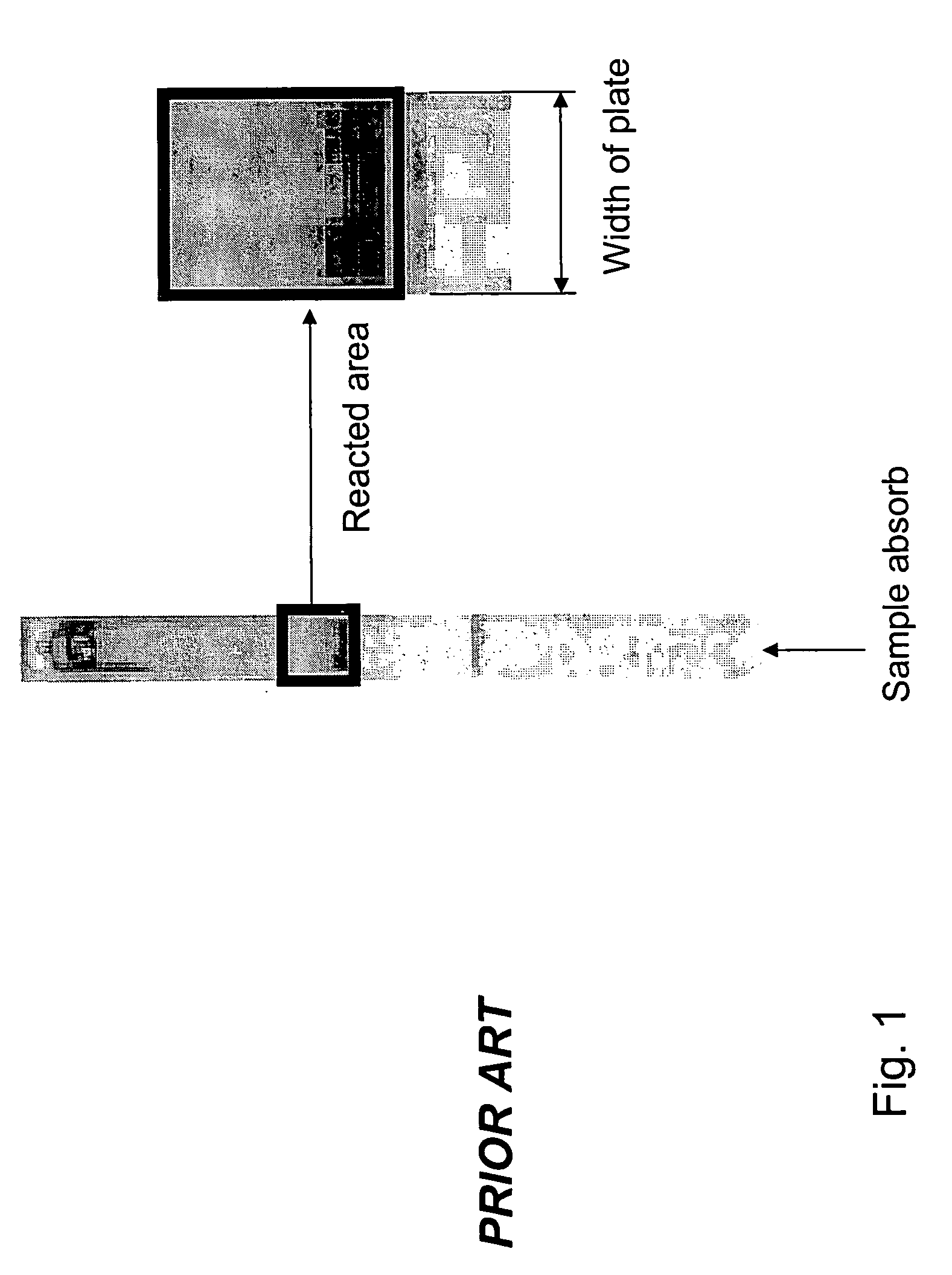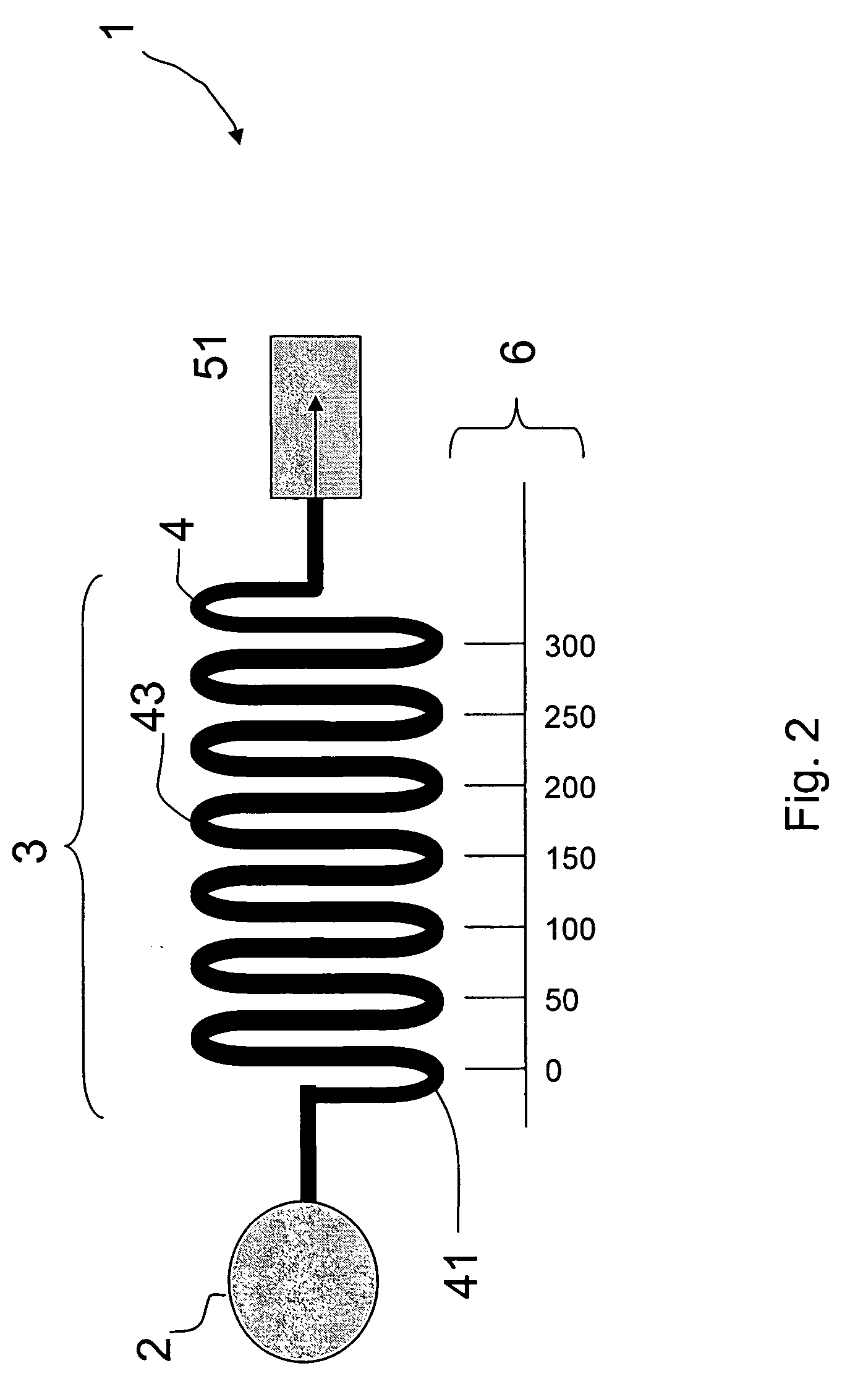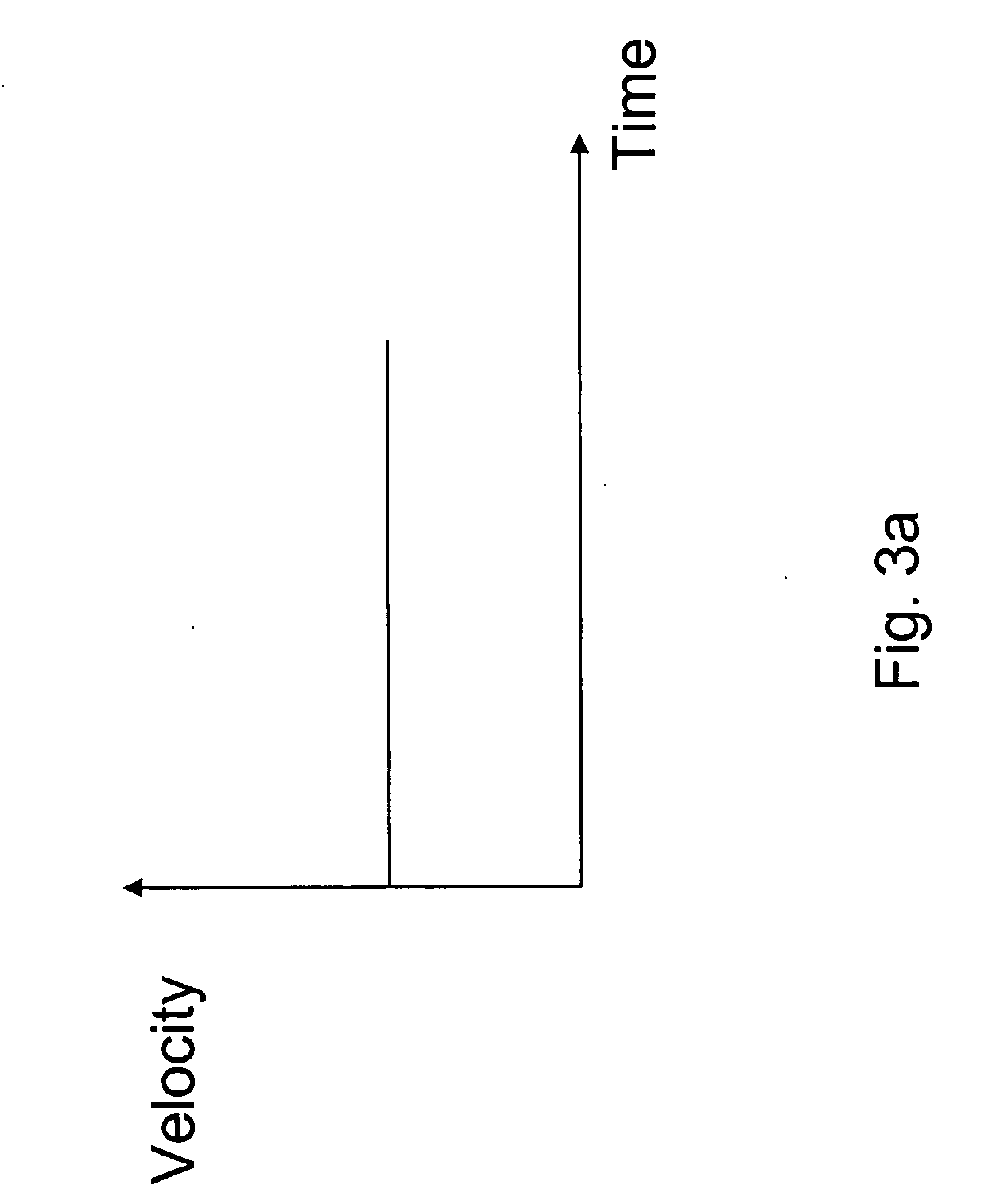Analyte assay structure in microfluidic chip for quantitative analysis and method for using the same
- Summary
- Abstract
- Description
- Claims
- Application Information
AI Technical Summary
Benefits of technology
Problems solved by technology
Method used
Image
Examples
example 1
Applying Speed Control to a Quantitative Assay of the Analyte
[0094] In this example photolithoghaphy of MEMS process and polymer materials were applied to make the sample assay structure. Two samples with different quantities of the analyte were tested using the quantitative analyte assay structure presented in the present invention. The structure was constructed of an upper and a lower substrate. The upper substrate was made of hydrophobic polymer on which a serpentine thin channel functions as the sample path and two wells at its two ends function as the sample inlet port and the waste well. The lower substrate was made of glass on which chemical function groups were grafted. The assembly of the two substrates formed the sample assay structure. An external pump was hooked up to the waste well to drive the sample in the microfluidic channel 100μm in both width and depth. The layout of the chip is similar to the one shown in FIG. 2, each straight section of the U-shaped channel (L)...
example 2
Applying Speed Control and Local Dimension Modifications to a Quantitative Assay of the Analyte
[0096] In this example the materials used and the manufacturing process applied to the assay structure were the same as those in Example 1. However, this example differs from the preceding one in that there were local modifications to the dimensions of the channel—a type of passive fluid modulating members was introduced in the present case. In the analyte detection region the 300 um wide channel was reduced in width unsymmetrically to 150 um at every 2 mm distance.
[0097] A sample assay structure in the microfluidic chip in this case modulated the reaction by controlling flow speed and by variations in the geometric shapes of the microfluidic channel for quantitative analyte analysis. Goat-anti-mouse-IgG, 5.6 mg / ml was immobilized on the wall of the channel. An active external pump is used to drive the sample making it flow at 12 mm / min, faster than that in Example 1. Two different sampl...
example 3
Applying Speed Control and Modifications to Local Dimension and Shape to a Quantitative Assay of the Analyte
[0098] In this example the materials used, the manufacturing process applied, and the alternating width of the channel (300 um full width narrowed unsymmetrically to 150 um) in the assay structure were the same as those in Example 2. The flow was driven at 12 mm / min as in Example 2.
[0099] However, in this example protrusions were located in the analyte detection region so local turbulent flow enhanced the opportunity for contact between the analyte and the immobilized substances. Goat-anti-mouse-IgC, 5.6 mg / ml was immobilized on the wall of the channel.
[0100] An active external pump was used to drive the sample making it flow at 12 mm / min, faster than in Example 1. Two different samples were tested on two chips of the same kind. Chip 1 had 6 ul of labeled analyte Mouse-IgG CGC, OD540=50, while Chip 2 had 3 ul of labeled analyte Mouse-IgG CGC, OD540=50 diluted in 3 ul of wat...
PUM
| Property | Measurement | Unit |
|---|---|---|
| Length | aaaaa | aaaaa |
| Concentration | aaaaa | aaaaa |
| Volume | aaaaa | aaaaa |
Abstract
Description
Claims
Application Information
 Login to View More
Login to View More - R&D
- Intellectual Property
- Life Sciences
- Materials
- Tech Scout
- Unparalleled Data Quality
- Higher Quality Content
- 60% Fewer Hallucinations
Browse by: Latest US Patents, China's latest patents, Technical Efficacy Thesaurus, Application Domain, Technology Topic, Popular Technical Reports.
© 2025 PatSnap. All rights reserved.Legal|Privacy policy|Modern Slavery Act Transparency Statement|Sitemap|About US| Contact US: help@patsnap.com



